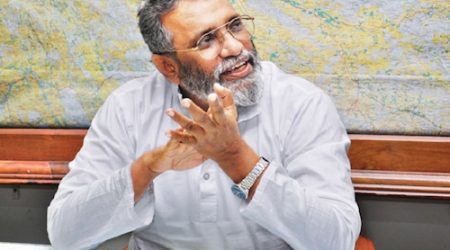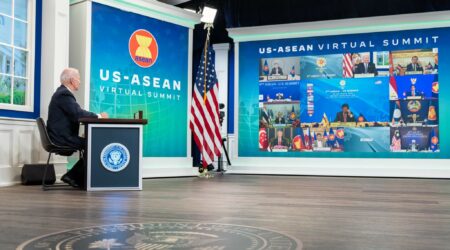By Dhruva Jaishankar
The India-United States (US) relationship has, despite the efforts of naysayers, developed on a positive trajectory over the past two decades. Today, the US is among India’s most important security partners (alongside Russia and France), and arguably the most comprehensive, with collaboration extending to intelligence, homeland security, defense technology, and maritime, space, and cyber cooperation.
Although Europe and Japan remain important countries for Indian trade and incoming investment, the US is also perhaps India’s most comprehensive economic partner, if research and development (R&D), education, technology, employment, energy, and health care are taken into consideration.
For the US, the India partnership has progressed at a time when almost every other major relationship — with both adversaries and allies — has experienced immense tumult. Despite some continuing areas of difference, India is the rare country over which Republicans and Democrats compete to project themselves as the better party to partner.
Nevertheless, whatever the outcome of next month’s US elections, relations between India and the US are set to enter a new, more constructive, but paradoxically more difficult phase.
For example, the basic building blocks of an India-US defense partnership have now been put in place. Whether on logistics or secure communications, the basic agreements required for military cooperation have been — or are about to be — signed. A political level 2+2 dialogue has been institutionalized to oversee the host of working level bilateral and multilateral consultations, covering everything from space and cyber cooperation to defense technology and maritime security.
Defense sales have become routine, with the Indian armed forces employing a growing number of American platforms. Technology barriers, which had once been the major obstacle to closer ties, have largely been overcome. All three military services conduct regular bilateral exercises, and a tri-service exercise has been initiated.
The next steps towards a more robust defense partnership, however, present far more difficult challenges. Further defense co-production and R&D will require significant changes to India’s defense industrial ecosystem, including predictability concerning Indian procurement and considerations of export markets, as India integrates into international supply chains. Greater interoperability will entail a distribution of labour and planning for specific scenarios, which, in turn, will require a degree of trust from both countries.
Similar challenges are discernible in the cyber domain and on emerging technology more generally. Again, the broad tenets of India-US cooperation are now more or less in place, with a degree of information-sharing between emergency response teams that would have been unheard of a decade ago. A shared understanding of the promise of various emerging technologies, and concern about China’s potential global role, have led to India-US cooperation in new multilateral entities.
The challenges may be even greater in implementing India-US cooperation on development assistance and infrastructure in third countries. Both have articulated similar concerns about China’s Belt and Road Initiative, and both India and the US bring certain strengths to the table when it comes to development assistance. India’s State-backed foreign assistance, loans, and investment are no longer negligible, especially in South Asia and Africa.
Meanwhile, the US — which was already a major foreign grant assistance provider through the US Agency for International Development (USAID) — has increased its capacity for overseas lending through the BUILD Act and is formulating standards via the Blue Dot Network.
But despite top-down agreement, India-US joint coordination — let alone collaboration — may prove more complicated.
Despite talk of a “trade war” and tariffs under President Donald Trump, goods trade between India and the US grew from about $60 billion in 2013 to over $90 billion in 2019. Prior to the pandemic, the number of Indian students in the US increased, as did two-way investment.
But further economic relations will likely be based less on goods trade, and more on other aspects of economic cooperation. These might include higher education, health care, innovation, and green energy collaboration, areas where the impact may be less quantifiable but no less important. But these forms of collaboration will, in turn, require major steps to ensure regulatory and policy predictability.
The next stage in India-US relations, while rewarding, may not be without its regular frustrations.
(Dhruva Jaishankar is director of the US Initiative at the Observer Research Foundation. The opinion piece appeared in The Hindustan Times)










